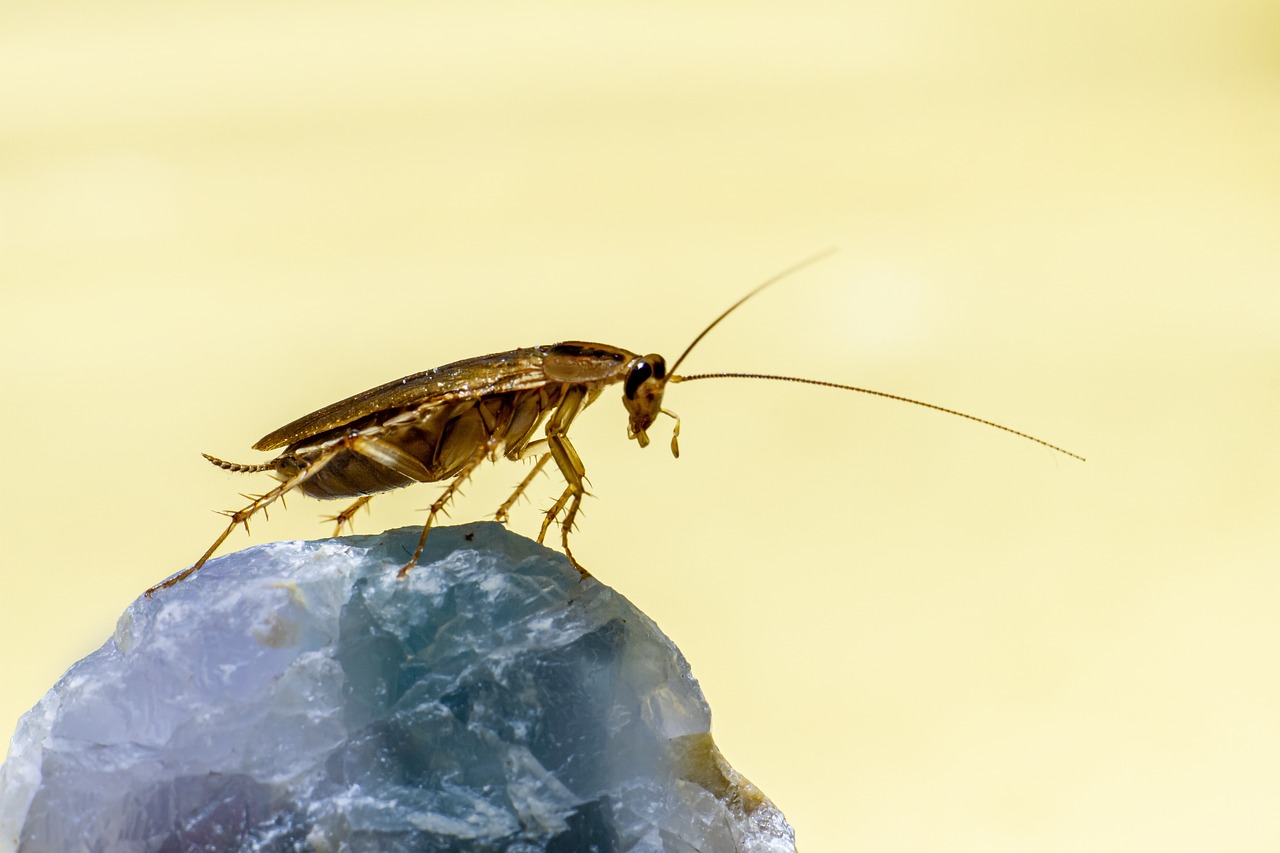
Pre-reading questions:
I will read each question. Then, please answer them.
- What do you know about the habitat and behavior of cockroaches?
- In what ways do you think cockroaches might impact human health and well-being?
Vocabulary:
I will read the words, meanings, and sample sentences. Then, repeat after me.
- exploit /EK-sploit/
- urban /UR-buhn/
- demonstrate /DEM-uhn-streyt/
- rapidly /RAP-id-lee/
- presence /PREZ-uhns/
[verb] – to take advantage of or make use of something for one’s benefit
The company exploited new technologies to gain a competitive edge in the market.
[adjective] – of or in a city or town
The urban landscape is characterized by tall buildings, busy streets, and vibrant cultural life.
[verb] – to show or make something clear
The teacher used a simple experiment to demonstrate the principles of physics to the students.
[adverb] – in a fast or sudden way
The population of the city grew rapidly due to increased migration and urbanization.
[noun] – the fact that someone or something is in a place
The presence of rare birds in the park attracts many wildlife photographers each year.
Article reading:
Please read the whole article. Then, I will check your pronunciation and intonation.
A comprehensive genetic study recently published in the Proceedings of the National Academy of Sciences has traced the origins of cockroaches back to Southeast Asia, from where they spread globally alongside human expansion. The research analyzed the DNA from over 280 specimens collected from seventeen countries and six continents. It revealed that the German cockroach, which is now found worldwide, likely evolved from its Asian ancestors around 2,100 years ago. The study further suggests that these insects exploited human movement and trade routes to migrate globally, initially moving westward to the Middle East around 1,200 years ago by potentially infiltrating the supplies of itinerant soldiers and later reaching Europe through the maritime ventures of the Dutch and British East India companies about 270 years ago.
The resilience of cockroaches in adapting to diverse environments, especially indoor spaces, is linked to major technological advancements such as the steam engine and indoor plumbing. These developments not only improved human lifestyles but also provided ideal conditions for cockroaches to flourish in urban settings. The research underscores the importance of understanding the evolutionary and migratory patterns of cockroaches in developing more effective pest control strategies. This is increasingly vital as cockroaches demonstrate enhanced resilience by rapidly developing resistance to traditional pesticides. By elucidating these patterns, the study offers crucial insights into the ongoing challenge of controlling the pervasive presence of these robust insects in human environments.
The resilience of cockroaches in adapting to diverse environments, especially indoor spaces, is linked to major technological advancements such as the steam engine and indoor plumbing. These developments not only improved human lifestyles but also provided ideal conditions for cockroaches to flourish in urban settings. The research underscores the importance of understanding the evolutionary and migratory patterns of cockroaches in developing more effective pest control strategies. This is increasingly vital as cockroaches demonstrate enhanced resilience by rapidly developing resistance to traditional pesticides. By elucidating these patterns, the study offers crucial insights into the ongoing challenge of controlling the pervasive presence of these robust insects in human environments.
Comprehension questions
I will read each question. Then, please answer them based on the article.
- Where were the origins of cockroaches traced back to?
- How many specimens were analyzed in the research?
- When did the German cockroach likely evolve from its Asian ancestors?
- How did cockroaches initially move westward to the Middle East?
- What technological advancements are linked to the resilience of cockroaches in adapting to diverse environments?
Discussion questions
I will read each question. Then, please answer them.
- Have you ever dealt with cockroaches in your home or workplace? If yes, what methods did you use to try to control them? If not, what would be your approach to managing such a pest infestation based on what you know?
- Have you heard about the resilience of cockroaches in adapting to diverse environments and developing resistance to pesticides? If yes, how does this information affect your perception of pest control methods? If not, what are your initial thoughts on the adaptability of cockroaches in urban environments?
- Do you think understanding the migratory and evolutionary patterns of pests like cockroaches can significantly influence the development of more sustainable and effective pest control strategies?
- In what ways might the findings of the genetic study on cockroach origins challenge our traditional notions of human history and migration patterns? How does this research broaden our understanding of the interconnectedness between human activities and the distribution of other species?
- Considering the rapid adaptability of cockroaches to urban environments and their increasing resistance to pesticides, what ethical considerations should be taken into account when developing pest control strategies?